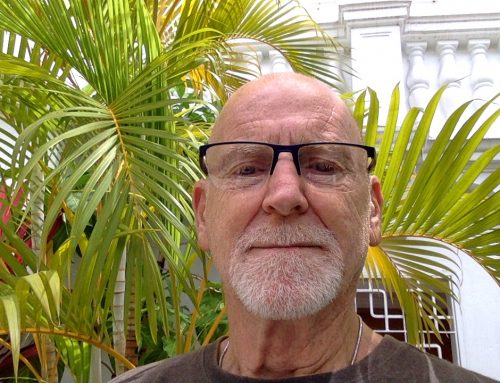The Contract of Your Birth
“It was just before sunrise at the electric blue hour I had come to appreciate in the week since I had given up sleeping,” writes Max in the opening chapter of Walks on the Margins: A Story of Bipolar Illness.
Max was twenty and a junior in college when he began his manic journey through the small college town of Grinnell, Iowa. Before then, manic depression was not part of my vocabulary. I never imaged that it would strike my son.
Max was picked up by the police that day, transported to the hospital, and diagnosed with Bipolar I. We took him home. I roasted chicken and mashed potatoes, dished up strawberry ice cream, warmed milk, hoping to bring my son back to himself. But just a few months later the other half of manic depression hit him hard.
Writes Max, “Quick was the rant and rattle of suicidal ideation to snuff out completely any lingering hope for a normal life. The question of how and where I could end the agony soon turned into a habit of minute-by-minute thinking, like the compulsion to open and close a door.”
Something had to be done. More mood stabilizers, fewer antipsychotics, a different family of anti-depressants, a new one, a proven one, an experimental one, a conservative one. Slowly Max began to stabilize and returned to college the next semester.
A year and a half later while on spring break, Max disappeared in Chicago.
I feared the worst, pictured him sleeping under a bridge, bleeding in a back alley, or laying unidentified in a Chicago morgue. I kept my phone in my pocket and when it rattled against my hip, I prayed someone would tell me Max was okay. The call finally came. Max had been admitted to a Chicago hospital. I told myself he would get through this episode just as he had the last, that his dreams would not be buried under the rubble of manic-depression, that every page studied, paper written, canvas painted wouldn’t seem like a lie.”
Max had an episode every year after that. He disappeared among the big city homeless, ended up handcuffed in the back of police cruisers, and came within inches of jumping from a shattered eighth floor window in Philadelphia. By the time he was twenty-six, he’d earned a dozen commitments to psychiatric institutions.
For me the homeless pushing grocery carts scrawled with intimations of the second coming became encounters too close to home. I struggled to come to terms with my changing role as parent and confidant. Stymied, bullied, blindsided by doctors, hospitals, and the law, I chased Max’s collapsing dreams and feared he wouldn’t live through the next crisis.
“I’m so sorry,” a doctor once said to me. “Max is never going to get well. He can never live on his own. You’d better start planning for his future.”
I could not, would not, accept that hopelessness. I was clear-eyed about the illness and its implications, but determined not to fall into the trap of assuming incurable means hopeless. I became deeply involved in NAMI (National Alliance on Mental Illness) and have become a vocal advocate for those with mental illness and their families, imparting the message that, with adequate support, “people with mental illness can and do succeed. They live fulfilled lives, working and developing significant relationships. They engage in the process of recovery, knowing that recovery doesn’t mean cure.”
Max, too, is realistic about his struggle and knows the invaluable gift of family support. When I sat beside him in his apartment during a bout of suicidal depression, he writes:
“And yet, my mom was there with me still, sitting on the bed next to me in my basement cave, when I opened my acceptance letter to graduate school, the application for which she did a wonderful job.
‘Thank God,’ she and I said in the same breath. She had ushered me back into life once again. What can I say without resorting to cliché? I can’t. Really though, you don’t have to bring everyone down with you. But, of course, this means not going down at all. And so there is the contract of your birth.”
After years of struggle, Max and I wrote our memoir “Walks on the Margins: A Story of Bipolar Illness.” We’ve found healing in the writing. Now we are speaking out about mental illness to whomever wants to hear, and to many who don’t understand what it means to struggle with these illness. We want to break through the barriers of stigma, put a face on illness because that’s when things will begin to change. That’s when our communities will develop good and accessible mental health treatment for all those who suffer.
Kathy Brandt has published four novels with Penguin and taught writing at the University of Colorado for ten years. She recently completed her term as President of the National Alliance on Mental Illness in Colorado Springs (NAMI-CS) and received the 2012 NAMI National Award for outstanding service to the organization. She has a B.A. in English and an M.A. in Rhetoric. She lives in the mountains of Colorado.
–Max Maddox has a BA in philosophy from Grinnell College and an MFA from the Pennsylvania Academy of Fine Art, where he was nominated for the Joan Mitchell Award and received the Fellowship Trust Award. He has exhibited his work around the country. He lives in Colorado where he teaches and continues to pursue his career in art.








Leave A Comment